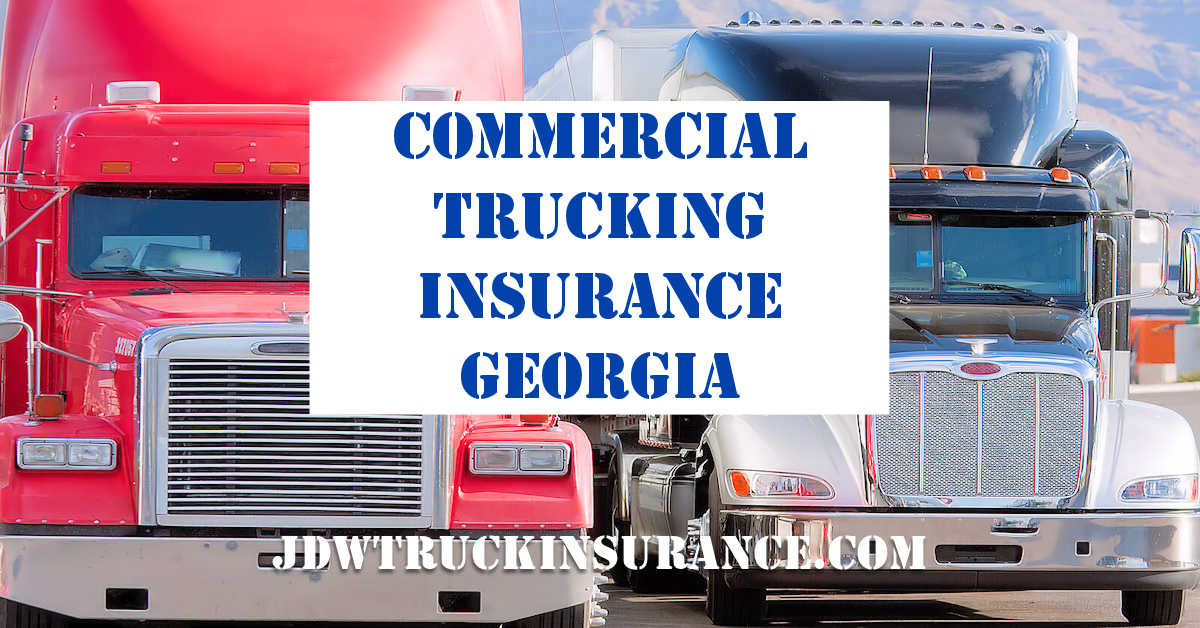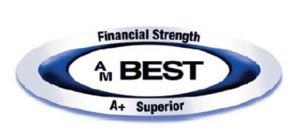Owner Operator Truck Truck Insurance Dublin, Georgia
New Authority Truck Insurance Georgia
Commercial truck insurance Georgia. Owner Operator Truck Truck Insurance Dublin, Georgia. Affordable commercial truck insurance GA. Top rated commercial truck insurance companies Georgia.
Owner Operator Truck Truck Insurance Dublin, Georgia
If you are searching for New Authority Truck Insurance Georgia. JDW Truckers Insurance specializes in New Authority Truck Insurance in Georgia. We help you get affordable commercial insurance rates for your new authority.
We offer quote from only the top rated commercial truck insurance companies who offer the best rates for your new authority in Georgia.
JDW will help get the the correct commercial truck insurance in place which will fit your budget and allow you to haul the cargo you want and need to in order to be successful.
We are here to answer your questions with fast and friendly service.
Owner Operator Truck Truck Insurance Dublin, Georgia
We offer affordable new authority trucking insurance for the entire state of Georgia.
We Customize your New Authority Truck Insurance to Help you Save Money!
Our agents at JDW Truckers Insurance know trucking insurance in Georgia. We will explain the different options and commercial truck insurance requirements in Georgia.
We help you get the right coverages in place so you are no over paying for coverages you may not need. We also help you make sure you have the coverages you need in place. And we do this at affordable commercial truck insurance rates.
New Authority Truck Insurance Requirements and Options
General Liability Insurance for Truckers
- General liability insurance for truckers should not be confused with primary liability for truckers.
- Similar to primary liability. General liability offers coverages to pay for physical damage to other and/or bodily injury to others. BUT there is a difference between the two.
- For example, if you are loading or unloading and you cause injury to someone or their property this is when the general liability policy would respond.
- The actions of a driver while representing the insured and on the premises of others, such as loading docks and truck stops
- General Liability is normally offered $1,000,00 per occurrence and $2,000,00 aggregate. What does this mean?
- It the insurance company will pay up to $1,000,000 for any one claim and no more than $2,000,000 per year for the total of all claims.
- General liability can be required by shippers and other companies such as the UIIA and flatbed operations.
- If there is any chance you might be involved in loading or unloading. General Liability is relatively inexpensive and is an advised coverage.
Auto Liability Insurance
- Your Auto Liability or primary liability will be the major cost for your trucking insurance policy. Although the FMCAS can only require $750,000 in most cases shippers will require $1,000,000 in primary liability insurance coverage before they will allow you to pick up loads.
- Primary liability insurance covers damages to third parties for bodily injury and physical damage to others property in the event of an accident.
Medical Pay
- In most cases this is a low cost add on to your primary liability insurance to cover medical expenses.
PIP – Personal Injury Protection
- Some states require this coverage and, in many cases, can reduce the need for Medical Pay.
- Personal injury protection (PIP), also known as no-fault insurance, covers medical expenses and lost wages of you and your passengers if you’re injured in an accident. PIP coverage protects you regardless of who is at fault.
Uninsured Motorist
- If you’re hit by a driver with no insurance…
- Uninsured motorist bodily injury (UMBI) may pay medical bills for both you and your passengers.
- Uninsured motorist property damage (UMPD) may pay for damage to your vehicle.
Underinsured Motorist
- If you’re hit by a driver with not enough insurance…
- Underinsured motorist bodily injury (UIMBI) may pay medical bills for both you and your passengers
- Underinsured motorist property damage (UIMPD) may pay for damage to your vehicle
Motor Truck Cargo
- MTC or Cargo insurance provides insurance on the freight or commodity hauled by a for-hire trucker. It covers your liability for cargo that is lost or damaged due to causes like fire, collision or striking of a load.
- If your load is accidentally dumped on a roadway or waterway, some cargo forms offer Removal Expenses coverage pays for removing debris or extracting pollutants caused by the debris. And can also pay for costs related to preventing further loss to damaged cargo through Sue and Labor Coverage and legal expenses in the defense or settlement of claims. Another option is Earned Freight Coverage to cover freight charges the customer loses because of an undelivered load.
- Cargo insurance deductibles can be set at $1,000, $2,500, $5,00 or even higher if you are self-insured.
- Cargo coverage limits are normally set at $100,00 but some shippers may have higher requirements depending on the cargo you are hauling.
- Cargo policies can have exclusions stating what cargo it will or will not cover.
Trucking Physical Damage Insurance (PD)
- Physical damage insurance coverages are designed to pay for losses to your equipment and damages to others equipment. (Others equipment must be listed on your policy).
- If you own or lease equipment. You may be required to have PD by bank or leasing company to carry a set amount of physical damage insurance and name them as a Loss Payee.
- PD can also cover damage to others equipment you are in possession of if the coverage is listed on your policy. An example would be non-owned trailer insurance coverage.
- Deductibles for physical damage range from $1,000 to $5,000.
- Required deductibles. If you have a loan on your equipment or it is leased. They bank or leasing company may have a minimum deductible you can have on your physical damage policy.
Owner Operator Truck Truck Insurance Dublin, Georgia
Chat with JDW Truckers Insurance. We are fast and friendly. Great customer service. Free 24/7 COI.
We offer affordable new authority truck insurance in:
AL – AR – FL – GA – IN – MO – MS – NC – OH – PA – SC – TN – TX – VA
We offer new authority truck insurance quotes for:
- Dry van
- Flatbed
- UIIA
- Amazon
- Reefer and more
Owner Operator Truck Truck Insurance Dublin, Georgia
Owner Operator Truck Truck Insurance Dublin, Georgia
Dublin (Irish: Baile Átha Cliath) is a city and county seat of Laurens County, Georgia, United States. As of the 2020 census, the city had a population of 16,074.
The original settlement was named after Dublin, Ireland.
Dublin, according to a historical marker at the town’s main Oconee River bridge, was one of the last encampments at which Confederate President Jefferson Davis and his family stayed before being captured by Union forces in May 1865.
In the Dublin riot of July 1919 there were a series of violent racial riots between white and black members of the community. These were part of a larger series of racial violence during the 1919 Red Summer.
On April 17, 1944, Martin Luther King Jr. gave his first public speech, “The Negro and the Constitution” at First African Baptist Church in Dublin.
Dublin is located in north-central Laurens County. The town, named such because the Middle Georgia Piedmont reminded Irish settlers of terrain in their native country, was founded on the Oconee River, which starts in the foothills of the Blue Ridge Mountains in northern Georgia before combining with the Ocmulgee River to form the Altamaha, a river which then proceeds to its mouth on the Atlantic Ocean. The Oconee forms the eastern boundary of Dublin, separating it from the city of East Dublin.
According to the United States Census Bureau, the town has a total area of 16.0 square miles (41.5 km), of which 15.9 square miles (41.2 km2) are land and 0.09 square miles (0.24 km), or 0.59%, are water.
The city is located in the central part of the state along Interstate 16. Access to the city can be found from exits 49, 51, 54, and 58. Via I-16, Savannah is 117 miles (188 km) east, and Macon is 53 miles (85 km) northwest. US routes 80, 319, and 441 also run through the city. US 441 connects the city to Milledgeville, 47 miles (76 km) northwest, and McRae–Helena, 35 miles (56 km) south. Numerous state and local highways also run through the city.
Dublin has two historic districts designated by the National Register of Historic Places: the Dublin Commercial Historic District and the Stubbs Park–Stonewall Street Historic District. The Dublin Commercial Historic District consists of the original downtown commercial core, including the earliest extant building in the district: the Hicks Building, dating to 1893. The historic district contains 78 contributing properties, including the Dublin Carnegie Library First National Bank Building, and the former United States Post Office building. Structures within the district represent a wide range of architectural styles, including Colonial Revival, Neoclassical, Commercial, and Art Deco.
The Stubbs Park-Stonewall Street Historic District is located west of Dublin’s central business district. The district contains 470 contributing properties, most of which are residential homes constructed between the late 1910s to the early 1940s. The predominant architectural styles of the area consist of Craftsman, Gothic Revival, Folk Victorian, and Georgian Cottage. In addition to historic residences, the district contains properties including historic churches, historic cemeteries, and Dublin’s first public park, Stubbs Park.
As of the 2020 United States census, there were 16,074 people, 5,520 households, and 3,336 families residing in the city.
As of the census of 2000, there were 15,857 people, 6,130 households, and 4,027 families residing in the city. The population density was 1,200.7 inhabitants per square mile (463.6/km2). There were 6,977 housing units at an average density of 528.3 per square mile (204.0/km). The racial makeup of the city was 51.42% African American, 45.54% White, 0.20% Native American, 1.75% Asian, 0.04% Pacific Islander, 0.29% from other races, and 0.76% from two or more races. Hispanic or Latino of any race were 1.14% of the population.
There were 6,130 households, out of which 31.1% had children under the age of 18 living with them, 39.2% were married couples living together, 23.2% had a female householder with no husband present, and 34.3% were non-families. 31.1% of all households were made up of individuals, and 12.7% had someone living alone who was 65 years of age or older. The average household size was 2.44 and the average family size was 3.05.
In the city, the population was spread out, with 26.7% under the age of 18, 9.0% from 18 to 24, 24.8% from 25 to 44, 22.2% from 45 to 64, and 17.2% who were 65 years of age or older. The median age was 37 years. For every 100 females, there were 85.7 males. For every 100 females age 18 and over, there were 80.2 males.
The median income for a household in the city was $28,532, and the median income for a family was $36,463. Males had a median income of $30,830 versus $21,553 for females. The per capita income for the city was $16,560. About 22.5% of families and 27.5% of the population were below the poverty line, including 41.1% of those under age 18 and 21.2% of those age 65 or over.
Dublin is the principal city of the Dublin Micropolitan Statistical Area, a micropolitan area that covers Johnson and Laurens counties and had a combined population of 53,434 at the 2000 census.
Dublin’s city government is made up of a mayor and a city council composed of seven council members. Four of the council members represent wards, or districts, within the city boundaries; the remaining three members are considered council members at large, representing the entire city as legislative members.
Dublin was chosen as a City of Excellence by the Georgia Municipal Association and Georgia Trend magazine in 2000. This distinction recognized Dublin as one of the ten best managed and most livable cities in Georgia when evaluated on areas like public safety, cultural activities, fiscal management, and downtown viability.
In 2005, Dublin was designated as a “Signature Community” by the Georgia Department of Community Affairs. Dublin was also recognized by the American Association of Retirement Communities (AARC) as a Seal of Approval Community in 2009.
The United States Postal Service operates the Dublin Post Office and the Court Square Station in Dublin.
The Carl Vinson Veterans Administration Medical Center is located in Dublin. It was originally commissioned as Naval Hospital Dublin on January 22, 1945, as an ideal location for convalescence from rheumatic fever. As such it was the site of the commissioning of Naval Medical Research Unit Four on May 31, 1946, to study the disease. The Navy transferred the hospital to the Veterans Affairs Department in November 1947, and it was subsequently named for congressman Carl Vinson who was responsible for getting it built in Dublin. Today, the medical center provides a range of services to veterans in Middle and South Georgia, including primary care, mental health, ambulatory and urgent care, optometry, women’s health, and extended care. The medical center features a 340 operating-bed facility and has approximately 1,100 employees.
Dublin’s Laurens County Library is known for its genealogy department, with archives and records going back two hundred years.
Theatre Dublin, originally known as the Martin Theater, was constructed in 1934 in Dublin’s Historic Downtown Commercial District. The theatre features Art Deco architectural design, with flat symmetrical wall surfacing and horizontal bands, in addition to an overhanging marquee and neon sign.
Since its renovation in 1996, Theatre Dublin has served as a performing arts center for Dublin-Laurens County and surrounding areas. The theatre houses a regular variety of events and performances, including musical artists, plays and performances, orchestras, concerts, and showings of both classical and contemporary films.
The Dublin Carnegie Library was built in 1904 by a grant from Andrew Carnegie. It is located in Dublin’s Historic Downtown Commercial District, and the Dublin Carnegie is one of only three surviving Carnegie Libraries in the state of Georgia listed on the National Register of Historic Places and still in its original form. The Dublin Carnegie served as public library for the region until the 1960s, at which point the city and county constructed a larger public library. In the late 1970s, the Dublin Carnegie Library was structurally stabilized and maintained by the Dublin-Laurens Historical Society. For more than 35 years, the building served as the home of the Dublin-Laurens Museum.
In 2014, the Dublin-Laurens Museum moved to a new location, leaving the Dublin Carnegie Library unoccupied. The Dublin Downtown Development Authority then renovated the building to its historic stature, restoring many of the building’s original features. Since the renovation by the DDA in 2014, the Dublin Carnegie has served as an event space and fine arts gallery, featuring local and statewide art displays.
The Dublin City School District holds pre-school to grade twelve, and consists of two elementary schools, a middle school, a high school, and an alternative school. The district has approximately 2,400 students as of 2016.
The Laurens County School District holds grades pre-school to grade twelve, and serves areas outside of the Dublin city limits.
Dublin is known for its St Patrick’s festival which takes place annually during March.
Dublin is home to several scholarship pageants, which are largely popular in the southern United States:
Dublin, the Oconee River, and Laurens County are mentioned in the opening page of James Joyce’s Finnegans Wake: “nor had topsawyer’s rocks by the stream Oconee exaggerated themselves to Laurens County’s gorgios while they went doublin their mumper all the time.” (Joyce explained in a letter: “Dublin, Laurens Co, Georgia, founded by a Dubliner, Peter Sawyer, on r. Oconee. Its motto: Doubling all the time.”)
Choose the Right Agent
When choosing the agent, you want to represent you to the insurance companies. Pick an agent that is trained in commercial truck insurance. And make sure the agent you choose to work with is there when you need them. Our agents are trained in commercial truck insurance and are easy to contact. Email, phone call or text message. We respond quickly to our clients.
Certificate of Insurance
Not being able to get a quick COI could cost you money by not being able to pick up a load for the lack of a COI. Our clients at JDW Truckers Insurance are given access to our COI Portal where they can issue a COI 24/7 free of charge.
Insurance Companies Customer Service
Not only should you choose a responsive agent but you will want to be insured by a commercial insurance company who also responds to your requests and are there to help you in case of a claim or endorsements
AM Best Ratings
The AM Best Rating of the commercial truck insurance company you choose to insure your operation should not be over looked. You want to be insured by a trucking insurance company that has the financial stability to pay claims. Many shippers will require an AM Best Rating of A – minus of better. At JDW all of network of commercial truck insurance companies have an AM Best Rating of A – or better.



